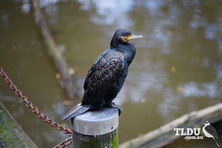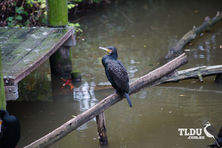
Shoppers Feedback:
Jan 17, 2017
Hello Ros,
I have now paid the invoice, but I would like to write to you just to say a big THANK YOU for getting me the Penguin!
The ChatterMate Penguin became a nice memory for me when I was in New Zealand, and I am so greatful to you for arranging so that I could have it! :-)
Thank you so much!!!!!!!!!!!
Regards,
Malin
Hi Ros,
Many thanks for your very kind email. I really appreciate your prompt reply!
I appreciate your advice regarding the decorations and customs. These are a gift for my daughter’s exchange student family so when she returns home on the weekend I will show her and see if she loves them as much as I do!
Thanks so very much again - I am truly grateful for your kind assistance.
Kind Regards
Bernadette
Ros,
Thanks again for the great customer service. It's a refreshing change!
Best regards,
Trevor
Hey Roz,
Thank you for your emails. Just loved my first order. The cute little Aussie bush critters are going to be used for an office Christmas decoration. My colleagues also liked them and talked about making an order to your site. I'll send you a photo when completed.
I'll be ordering more to send to my daughter's host family in America.
Fabulous service from you.
Kind regards,
Michelle
Thankyou. Order arrived today. One very happy grandson with his new beastly binoculars.
Regards,
Irene
- Home
- Wild Wonders
- Shop
- Aromas of Australia
- Australian Made
- Books
- Book Marks
- Christmas Decoration Sale
- Christmas Decorations
- Clocks
- Drink Holders
- Garden & Outdoor
- Gift Wrapping & Cards
- Home & Giftware
- Jewellery
- Keyrings
- New Products
- Pencils & Pen Holders
- Photo Frames
- Plush Toys
- Plush with Sound
- Sheepskin Rugs
- Stationery
- Stone Carvings
- Toys & Games
- Travel Goods
- Wedding
- Wild Figurines
- Wildlife Safety Products
- Wind Chimes
- Wine Charms
- View All Products
- Wildlife
- Australiana
- Explore
- Contact Us

Quick Facts
| Length: | 80 cm |
| Height: | - |
| Weight: | - |
| Colour: | All Black except from a white and yellow chin |
| Habitat: | Prefers extensive areas of freshwater, but can be found on coastal inlets and esuaries |
| Food: | Fish, crustaceans, aquatic insects and frogs |
| Predators: | - |
| Status: | Secure in all states and territories of Australia |
The Great Cormorant is almost entirely black in plumage, apart from a white and yellow chin and a small white patch on each thigh (absent in winter). The bill is grey and the legs and feet are black. Young birds resemble the adults but are more dusky-brown.
The Great Cormorant can be distinguished from the noticeably smaller (58 cm - 63 cm) Little Black Cormorant which is completely black and has a thinner bill.
The Great Cormorant is the largest of the Australian cormorants and is one of the largest in the world.
Great Cormorants are probably the most widespread member of the cormorant family with a range that includes North America, Europe, Africa, China, India, Southeast Asia, New Zealand, Papua New Guinea and Australia. It occurs throughout most of Australia but is more numerous in the south-east and south-west.
In spite of its preference for extensive areas of permanent freshwater, the Great Cormorant is not confined to these and is often observed on coastal inlets and estuaries.
Like other cormorants, the Great Cormorant feeds mainly on fish, supplemented in freshwater by crustaceans, various aquatic insects and frogs. The Great Cormorant is an excellent swimmer and captures its food in shallow underwater dives, normally lasting up to one minute. Underwater, it swims and pursues prey using its feet but not its wings. Outside of the breeding season small groups are formed although birds are often seen fishing alone.
Great Cormorants are sociable birds and around breeding time they form colonies of about 2 000 birds, with colonies of up to 20 000 birds being reported. Breeding can occur at any time depending on food supply. Both sexes build the nest, which is a large structure of sticks placed in a low tree or on the ground. Both parents also incubate the eggs and care for the young.
Last Updated: Wednesday 17th July, 2013
BUSH e-TELEGRAPH
Signup for our monthly newsletter the "e-Telegraph"
Quick Links
Home | The Beginning | About The Land Down Under | Wild Wonders | Advertise on Wild Wonders | Christmas Decoration Sale | Christmas Tree Decorations | Drink Holders | Plush with Sound | Stone Carvings | Wildlife Wine Charms | Freebies | Australian Wildlife | Help Our Wildlife | Australiana | Photo of the Month | Explore The Land Down Under | Contact Us | Legal Notices


